3D Printing can be a household thing in near future. No doubt, you might have heard about 3D Printing more often nowadays. The technology is deemed to be a catalyst for another industrial revolution. The days when 3D printing will be used for mass productions in manufacturing sector may not be far. 3D Printing, which has been in the industry since the late 1980s, earlier more popular by the term Additive Printing, is bound to leap beyond modelling and prototyping application.
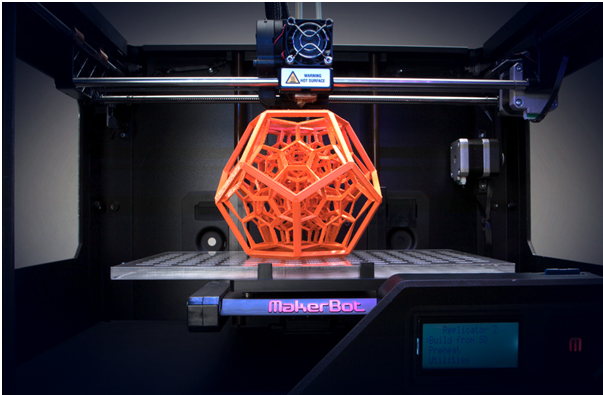
Figure1: MakerBot 3D Printer for Rapid Prototyping
So What exactly is 3D Printing or Additive Printing? This is an industrial process of making three dimensional solid objects from a digital file. A product designer or engineer creates a 3D Model of a product in CAD software and 3D printers print them layer by layer thereby creating a real three-dimensional object. The whole process from CAD modelling to printing is digital, free-form and computer controlled. This can be a common manufacturing process any soon and real products will be manufactured just by feeding 3D CAD Models to the new generation 3D Printers in the near future.
How Does 3D Printing Works?
At a glance, this technology can mesmerize anybody and one can be left thinking how a real object is created in the air. Before anybody may find it magical, let us reverse engineer this technology a bit.
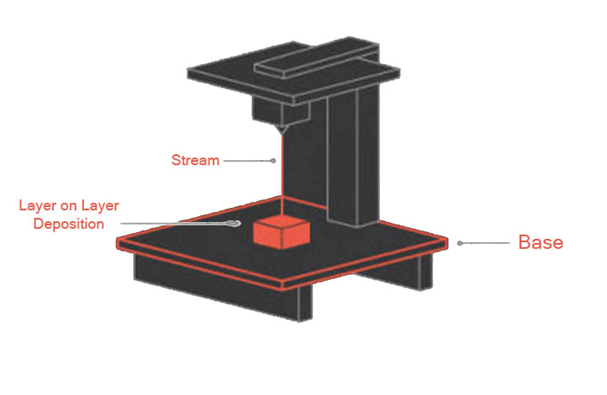
Figure2: Working of 3D Printer
3D Printing is a digital process. The 3D Models of any object in the form of STL (Stereolithography) or OBJ (object) files are digital files created on a CAD software.
The printing is done layer by layer bottom to up on a base where each layer in the form of a digital code is sliced from the STL or OBJ file. Here, each layer is actually a deposition of fabricating material on the base in a digitally defined and computer-controlled manner. The digital code of STL or OBJ file determines where the fabricating material is to be deposited within a layer and in what quantity and proportion. One can imagine each layer as a 2D plane where the adhesive material used for making the object is deposited in a specific quantity at specific points of the two-dimensional plane and gets solidified on instant cooling just like pixels are aggregated to form a 2D image on a digital display.
The complete 3D object is created by printing several layers on the top of one after the other.
The printing is carried out by using additive materials so each layer cements with the successive layer.
Therefore, a layer by layer deposition of additive material in a digitally controlled manner creates a real 3D object.
Since the object is created from a digital file, the shape, size, and design of the object can be controlled offering immense scalability.
If it exists since the 1980s, Why it is yet not a common industrial phenomenon?
The whole concept of 3D printing looks stunning. Of course, it can cut the manufacturing costs of industries supernaturally. From small scale industries to large manufacturing hubs, all should have adopted additive printing and saved a fortune. Still, it is not a common manufacturing process. There are three major reasons behind this.
3D printers are slow! yes, they do create real 3D objects. But still, it takes hours for a 3D printer to fabricate a single prototype or item. The slow operating speeds of current 3D printers restricts their application to modelling and prototyping. A boost in operating speeds of 3D printers in future can open their application in assembly lines of the manufacturing units.

The prototypes or objects created from current 3D printers have mechanical defects. The printing process is not error-free. The accuracy of printing depends upon the accuracy of STL or OBJ files and the software settings of the 3D printer. Moreover, the current 3D printers do have limited control over the operating temperature of the environment where the material is deposited and get solidified on the base. Obviously, this is another hurdle in deploying 3D printers to manufacturing products.
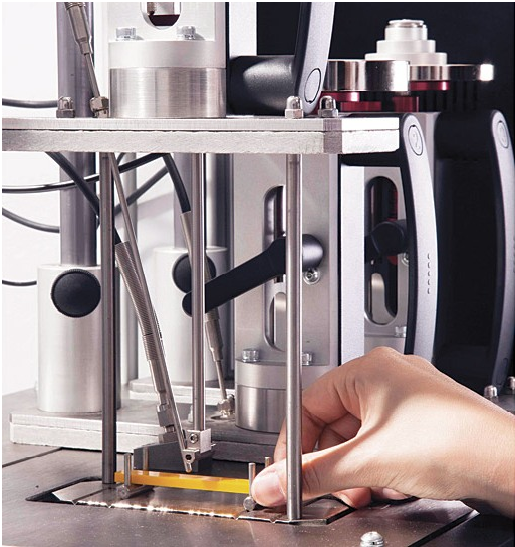
The material choices are right now limited to plastics and the real products are not just fabricated from plastics only. An innovation in additive materials used for 3D printing can really broaden the applications of the technology. Currently, only plastics are used for 3D printing because it is only possible to mould plastics and similar synthetic materials with limited control over the temperature of the moulding environment. Other materials have too high melting points or if have lower melting points take too much time to cool down after deposition on the base.
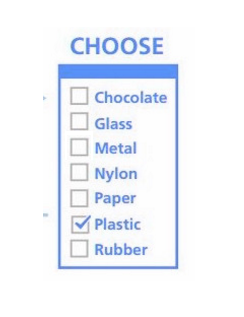
Figure3: 3D Printing Materials
Why Should You Take Interest in 3D Printing?
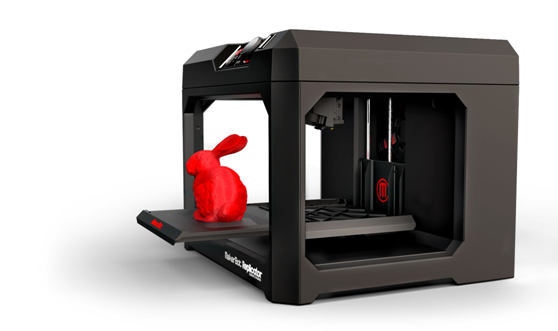
Figure 4: MakerBot 3D Printer for Rapid Prototyping
The 3D Printing is still widely used in modelling and prototyping of products. If you are looking towards a career in product design and engineering, you must have a keen eye on all changes and innovations, the 3D printing is going on. Despite mechanical errors and slow operating speeds, 3D printing is a great tool for modelling, prototyping and testing real product designs. Large corporate and manufacturers use the technology for modelling of their products, creating new prototypes and real-life testing of these prototypes for their upcoming products. Even if somebody is an independent innovator or technocrat, the technology could be extremely useful to him/her. The cost to have a 3D printer has greatly reduced and one can easily get a low-cost 3D printer for the lab if one is willing to tweak around with mechanical design of some could-be products of the future.
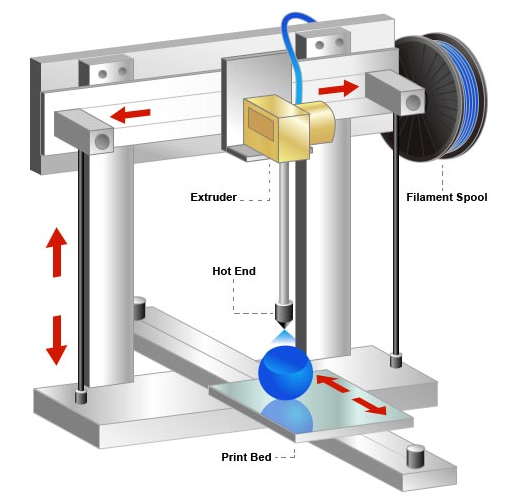
Figure5: Material Extrusion 3D Printing Technology
One can even contribute to the technology by making a 3D printer of his own. Many college students and innovators have successfully strived into making better 3D printers. Likely anybody can also build a futuristic or a hobby 3D printer with an attempt to overcoming current hurdles and limitations of the technology.
There are three major components of the technology –
1. 3D CAD Modelling
2. Slicing and Printer Settings
3. Physical Printing
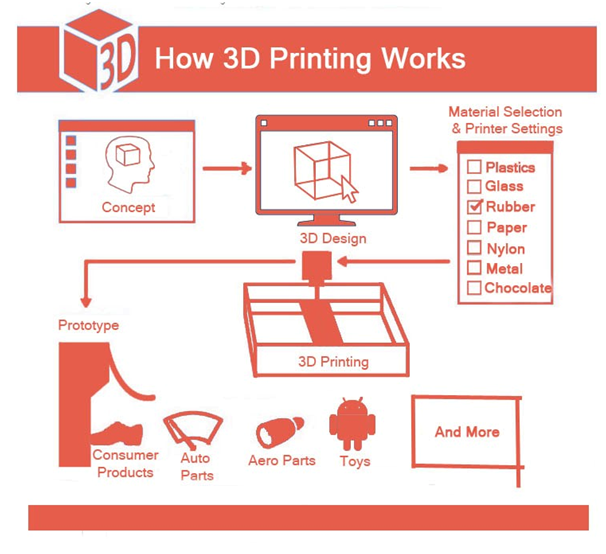
Figure6: How 3D Printing Works
If anybody is interested in product designing and engineering, 3D CAD Modelling and Slicing are the aspects of technology one should take interest in. These are the software aspects of the technology. One can get a low-cost 3D printer and start modelling and tweaking printer settings to get a design printed. The CAD modelling part involves creating a 3D design in a software like AutoCAD, Blender or any other and saving the design in an STL or OBJ file. The STL or OBJ files are converted into G-Codes. G-codes are the digital codes that a 3D printer can interpret to print the object. This process is called Slicing. All the printer settings are also determined at this stage. The most common software used for slicing is Cura. Another good thing is that Cura is free and open-source. So all that anybody needs to start with 3D printing is a CAD software, Cura and a 3D printer that can be purchased according to the budget.
And why not, anybody can also try to make a Do-It-Yourself 3D printer. This is where one will have to step ahead and learn how physical printing is carried out. There is no single way of carrying out 3D printing. A lot of innovators have tried different processes to make a better printer and ventures are still going on. Since, 3D printing has been recognized as a standard process in modelling and prototyping by the industry, in 2010 American Society for Testing and Materials (ASTM) group “ASTM F42 – Additive Manufacturing” acknowledged seven categories of additive manufacturing.
1. Material Extrusion (This is the most common 3D Printing method)
2. Vat Photopolymerisation
3. Binder Jetting
4. Powder Bed Fusion
5. Directed Energy Deposition
6. Material Jetting
7. Sheet Lamination
These are the recognized standard methods of 3D Printing. Anybody willing to take up a DIY 3D Printer needs to learn about these recognized standard 3D printing methods. Later, experiment with different fabrication materials can be done. One can try altering the environment factors, temperature controls and other manufacturing factors to come up with a better three-dimensional printing device.
How Far Can You Go with 3D Printing?
Definitely, additive printing may soon find application in regular manufacturing. From medical industry (Bio-Printing is a form of 3D printing used for medicines), automotives and aerospace to civil construction, textiles, defence manufacturing and robotics, 3D printing is currently used in the wide span of industries for pre-testing product or parts designs.
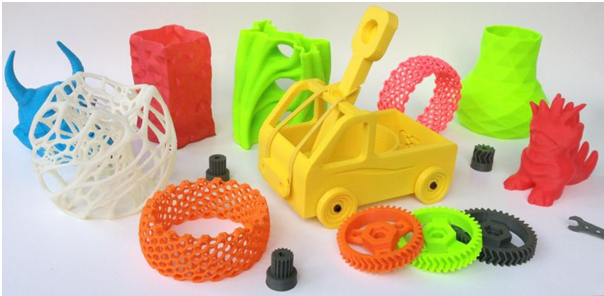
Figure7: 3D Printed Models and Prototypes
Learning and getting hands dirty on a 3D modelling software with an attempt to make out random or carefully thought prototype designs can possibly start a career in Industrial design, Product prototyping or Concept design engineering sectors. Even getting a budget 3D printer may allow to actually test a prototype that may even if never thought, could be a stunning futuristic product. And why not take initiative to build a DIY 3D printer. Maybe the new design become the next big thing of the thriving 3D Printing sector.
Definitely, 3D printing will be the face of next industrial revolution.
You may also like:
Filed Under: Tutorials

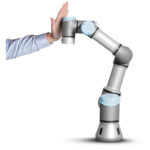

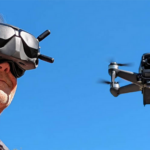
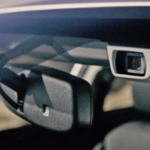
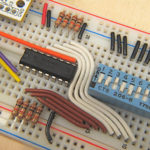
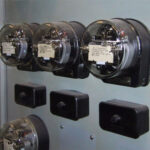

Questions related to this article?
👉Ask and discuss on Electro-Tech-Online.com and EDAboard.com forums.
Tell Us What You Think!!
You must be logged in to post a comment.